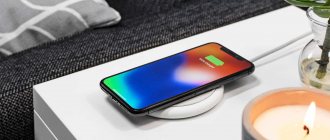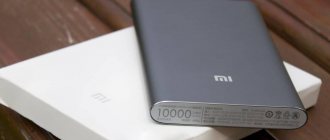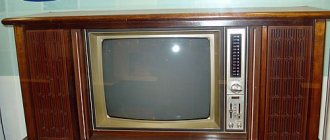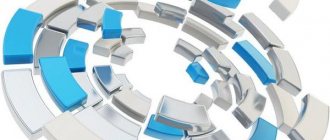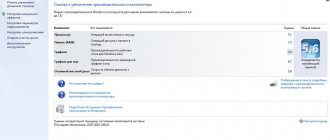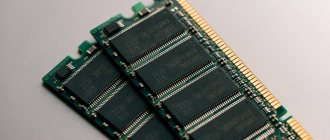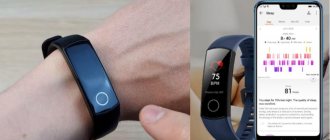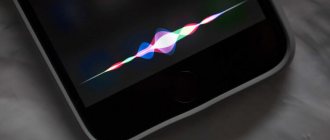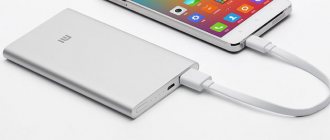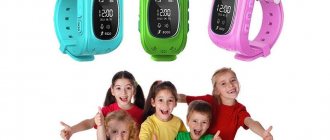MicroUSB
The most famous and popular of these solutions is the MicroUSB connector, which allows not only charging the device, but also transferring data. With its spread, there is no longer a need to have its own charger for each gadget, and the MicroUSB/USB Type-A cable has become a universal way to connect a smartphone to both a charger and a computer or laptop.
Important: the phone charges much slower from a PC than from a charger connected directly to an outlet. If you want to charge your device as quickly as possible, put it in airplane mode and use the charger.
The dimensions of the connector are only 7x2 mm. It was compactness that became one of the main factors that played in its favor when manufacturers were choosing between MicroUSB and MiniUSB options. The standard provides power up to 2.5 W and allows you to fully charge the phone in 1-5 hours, depending on the battery capacity, as well as the characteristics of the charger and the device itself. The maximum data transfer rate through such a connector in theory can be up to 480 Mbit/s, but in practice it is limited by many factors and can be several times lower.
In 2009, 13 companies producing smartphones and other digital equipment, including such large ones as Samsung and Apple, signed a document confirming their intention to standardize connectors and interfaces. The reasons are not only marketing, but also political, as well as reputational - European authorities have repeatedly called on manufacturers not to increase the number of different chargers, which then need to be recycled or disposed of.
About a year later, the European Parliament published a statement officially calling on mobile device manufacturers to switch to a single standard. This policy of representatives of various states played a role in securing microUSB as a universal connector for charging gadgets and transferring files. Only a few companies abandoned it. The most famous among them is Apple.
What is the correct name for the cable from the charging unit to the Android tablet or smartphone?
The smartphone itself will determine how much power to let in. If the battery is less than 2000mAh, the charger needs 1Amp, but if it is more than 2000mAh, 1.5 or 2Am is needed. You don’t have to worry about the cable, but it’s better, of course, to take a better one (softer), most Androids now have microUSB cords
Ohms measure resistance, not power. There are no such parameters in the cable. There is a brand and workmanship. ALL.
It is measured not in Ohms, but in Amperes. Your “original” is 2 Amperes. Any cable will do, unless the manufacturer has inserted resistors into theirs to determine whether the cable is “original” or just a “left one” is being used. In this case, the smartphone can “consume” current in different modes (normal in compatibility mode or accelerated “proprietary”)
The power is not 2 ohms, but 2 amps.
OTG standard
Many models of smartphones and tablets can be connected to the same models of flash drives as a PC - you only need the device to support the OTG standard and a special adapter.
Using it, you can connect to your phone not only a compact flash drive, but also a computer mouse, keyboard or gamepad. The adapter is also suitable for connecting a printer - documents and pictures can be printed directly from a mobile gadget.
Lightning
Previously, the Cupertino company's mobile gadgets used Apple's proprietary 30pin standard, but since 2012 it was replaced by the eight-pin Apple Lightning connector, which is similar in charging and data transfer speeds to MicroUSB. Calls from officials and the media did not lead to the abandonment of its own connector; instead, the company released a number of adapters with which you can charge your iPhone using regular USB chargers.
USB Type-C and USB 3.1 - what is the difference
The actual information transfer speed is usually several times less than the maximum and can be limited not only by the supported standard, but also by the cable, the port of a smartphone, tablet or computer, the performance of the controller and memory, so the theoretical limit is unattainable in real use scenarios.
Conclusion
Almost all modern smartphones and tablets are equipped with a microUSB connector (all of them comply with USB 2.0 specifications) or USB Type-C with support for USB 2.0, 3.0 or 3.1. Some of them have a fast charging function that requires a compatible charger - the implementation options in models from different manufacturers in this case differ. MicroUSB is slowly moving into the category of a connector for low-cost devices, and USB Type-C is now found not only in flagship smartphones, but also in mid-price gadgets, and sometimes in budget phones. At the same time, buyers should not let their guard down - before purchasing a new device, they should familiarize themselves with its characteristics and clarify which version of USB a particular model supports, if it is equipped with a USB Type-C connector.
An exception that does not use microUSB or USB Type-C is the iPhone - Apple smartphones have a proprietary Lightning connector instead, and to charge them using the USB interface you need an adapter cable.
Source
USB 3.0 0 type A
Known as "SuperSpeed", this Type A connector is commonly found on computer and hub host controllers and is a flat, rectangular interface. This interface holds the connection in place using friction, making it very easy for users to connect and disconnect. Instead of round pins, the connector uses flat pins that can withstand constant connection and disconnection very well. Connector A provides a downstream connection that is intended for use exclusively on host controllers and hubs. This connector is similar in size and shape to the Type A connector used in USB 2.0 and USB 1.1 devices. However, USB 3.0 Type A has additional pins that are not found in USB 2.0 and USB 1.1 Type A. The USB 3.0 connector is designed for USB SuperSpeed devices, however, it will transfer data from slower connectors and is backward compatible with USB 2.0 ports. USB 3.0 A connectors can be distinguished from previous versions by their blue color.
Male:
USB 3.0 type B
The USB 3.0 B-type connector is found on USB 3.0 devices. This connector is designed to transfer data and power USB SuperSpeed devices. Cables with this connector are not backward compatible with USB 2.0 or USB 1.1 devices; however, USB 3.0 devices with this connection type can connect to legacy USB 2.0 and 1.1 cables.
Male:
USB 3.0 Micro B
The USB 3.0 Micro B connector is found in USB 3.0 devices. This connector is designed to transfer data and power USB SuperSpeed devices. Cables using this connector are not backward compatible with USB 2.0 or USB 1.1 devices.
Male:
Female:
Types of connectors
The types of USB connectors depend on the function performed and the speed at which data is transferred. Thanks to the existence of several types of USB connectors, extended functionality is covered, which allows the user to simplify the connection between the computer and the device (mouse, keyboard, iPad, MFP, scanner, etc.).
When choosing a USB, you need to pay attention to the type of USB cable, the function and transfer speed.
Type-A
This USB connector still ranks among other types. The user encounters such cables every day. These include storage devices (flash drives), USB cables from chargers. Most cameras and routers are equipped with this type of USB cable. It is reliable and safe to use. It is harder to break and disable it.
This type is equipped with a built-in security system. The cable can only be inserted into the computer on one side. If you turn the cord over, it simply will not fit into the connector. Which is an advantage. Especially when using the cable by inexperienced users.
Type-B
Type B is used to connect peripherals - MFPs, scanners, faxes, and so on. A type B cable is not always supplied with the device and often you have to purchase it yourself. There are 2 types of USB type b cables: micro- and mini-USB.
A type of mini USB is an outdated USB port. This is an early version of the micro type. The use of mini USB is kept to a minimum. But still, sometimes there are devices that use this type of connection. You can see what micro USB looks like in the photo.
Type-C
It was invented relatively recently (first appeared on the market in 2014). The USB Type C connector is at the beginning of its development and is not actively used. Has reduced dimensions of both inputs. First used by Apple, which continues to improve this development today.
Interface compatibility
USB connectors of the same type are distinguished by the version produced. The 3.0 standard interface offers data transfer rates of up to 1 Gbit/s. The cost of the 3rd standard is an order of magnitude higher than the second, but users choose it because the 3.0 standard has increased transmission speed.
The interfaces are compatible, but work with degradation in quality and efficiency. For example, if you insert a 2.0 cable into a 3.0 port, the transmitter will operate at 2.0 speed. This is also observed in the opposite direction.
Therefore, to properly use USB standard 3.0, you need a connector in the computer with the same speed. Otherwise, the money will be given in vain. The speed of information exchange will not change.
USB is a universal serial bus that allows the device to communicate with a computer. USB types depend on the functionality performed by the cable. You need to be careful when choosing a cable; the speed of the device depends on it.
Source
What types of connectors are there for charging phones?
The first connector in phones was intended specifically for charging the gadget. Each manufacturer has its own standards, so in the past, often the charger from one cell phone did not fit the size of another. At the beginning of 2000, companies took into account the inconvenience and impracticality of connectors and began to use unified options.
What types of connectors are there for charging phones?
There are several types of universal connectors designed for charging a mobile phone.
Micro USB
Today this connector is used in almost all Android phones, except Type-C. The wire not only charges the gadget, but also transfers data to a computer or laptop. The cord is gradually fading into the background, but remains in demand due to the following advantages:
Providing an OTG phone allows them to act as hosts. If you need to transfer data directly from your smartphone to your computer, then this option will allow you to do this without intermediaries. You can also connect any device to the gadget – storage device, mouse, keyboard, headphones.
Micro USB comes in different types. Version 2.0 of the type is used in gadgets by default. This is the standard for the latest modifications of tablets and phones. The second 3.0 connector is installed only on smartphones and cell phones of some brands.
Lightning
This type of connector is used by Apple, which is the company that created it. The charging type is expensive. The Chinese sell fakes for half the price, but they can quickly fail, since even original cords often break due to their fragility. Benefits of charging:
Type-C
The variety was created in 2014. The cord's connector is oval-shaped and symmetrical, so it can be inserted on either side. The new charger was required to facilitate the operation of the USB 2.0 standard - it has only 4 contacts, while version 3.1 has 24. Thanks to its high power, the connector is universal and has the following advantages:
Previously, phones could be used as PCs by connecting different devices to them. With Type-C, the potential of this function is increased due to its high power. But not all connectors are equipped with version 3.1.
Some companies equip smartphones with Type-C connectors, but install USB 3.0 inside. It has weaker technical characteristics. They may even introduce version 2.0. Therefore, before purchasing a device, you should make sure that it is 3.1.
Type-C charging is installed on the following models:
The Type-C connector has grown in popularity in recent years. Despite this, the usual USB will still not leave the market. It is estimated that about 20 billion devices in the world are equipped with USB Type A charging.
Source
What types of USB cables are there for smartphones?
Thanks to the inexhaustible imagination of Chinese handicrafts, mobile technology users can buy cables of completely different configurations. For example, in the era of proprietaryism, the following “monster” was incredibly popular:
Yes, this charger fits all the main connectors!
Similar “multi-tools” are still on sale, but they have fewer plugs. Here is a 4-in-1 charger that can be ordered on GearBest for less than 200 rubles:
This charger is equipped with all modern plugs - Lightning, 30Pin (both for iPhone), microUSB, USB 3.0. Definitely a “must-have” for the user!
There are other interesting options. Here's a cable from OATSBASF for those who hate cables:
This is called a cable with Stretch function . Visually, it is somewhat similar to the Yo-Yo toy. The wire is pulled out to the length required, and at the end of use it is wound up. This is very convenient, because the owner of the gadget does not have to constantly untangle tangles of wires. The downside of the stretch cable is the price : compared to regular USB cables on GearBest , it is almost twice as expensive.
Here is another interesting solution offered by GearBest - a pocket cable keychain:
This cable allows you to charge two mobile devices simultaneously (for example, iPhone 5 and Android) and has a very tempting price - just over 100 rubles.
In domestic stores and showrooms, the user, of course, will not find such an abundance of different cables as on the pages of the GearBest and AliExpress . In addition, data equipment at retail costs significantly more. For these two reasons, users are recommended to order USB cables from China.
Choosing a charger for a smartphone
To choose the right charger, you need to know the technical characteristics that determine the consumer properties of the charger. It is equally important to understand what and in what direction is affected by the discrepancy between the adapter parameters and those specified in the technical specifications for the mobile gadget.
Types of chargers
In most cases, mobile gadgets are equipped with a standard network adapter, and other types must be purchased separately.
Types of charging connectors
At the beginning of the era of mobile gadgets, device manufacturers made connectors for each individual device. This brought them some additional profit, since the owner was forced to purchase only original chargers - others did not match the shape of the plug or voltage, and it was difficult to choose a suitable option. Users had to endure the inconvenience. Now the situation has changed, leading participants in the mobile gadgets market are striving for standardization. Most devices use three types of terminals for charging and data transfer.
Lightning
This connector is used in Apple mobile devices. It replaced the bulky 30-pin terminal and is the standard for gadgets produced by this company, although there is information about the company’s plans to switch to USB Type C. The connector is double-sided - you can connect on one side or the other. This was the first time such a solution was used when developing a connector, and at that time it was a breakthrough.
The advantages of such a connector are its robust design, as well as the ability to be cleaned of dirt when connected.
If you analyze the location and purpose of the pins in the connector, it becomes obvious that the functionality of the pins is asymmetrical. The connection direction is determined at the moment of connection by the built-in chip. The same microcircuit serves as protection against counterfeiting.
MicroUSB
This connector replaced the MiniUSB connector. Its visible difference from the previous modification is its size. In fact, microUSB has other advantages:
The disadvantages include the need for positioning when connecting (the connector is not reversible like Type C or Lightning). This led to a reduction in the use of this terminal.
Charging cords use a type B plug, since the phone in most cases acts as a peripheral device.
| № | Designation | Function | Wire insulation color |
| 1 | Vbus | Supply voltage (+5 volts) | Red |
| 2 | D- | DATA- | White |
| 3 | D+ | DATA+ | Green |
| 4 | ID | ON-the-GO ID | |
| 5 | GND | Common wire (0V) | Black |
Wire 4 defines the purpose of the connector in On-the-Go mode (when additional devices are connected to the phone directly) - a connection to the common wire means that the end is connected to the host, and if the pin is not connected to anything, the connector is connected to the peripheral device.
USB Type C
The most common and at the same time the most promising connector for mobile equipment is USB Type C. It is designed for use with gadgets with the Android operating system, but it is also used by manufacturers of other mobile equipment.
The oval plug contains two rows of contacts - one row is numbered from A1 to A12, the other - from B1 to B12. The contacts are located symmetrically, so the plug can be inserted on either side and no microcircuits are required to determine the position. Contacts can be grouped by functionality.
| Pin number | Marking | Purpose |
| 1.12 (A1, A12, B1, B12) | GND | 0 volt |
| 4,9 | Vbus | + supply voltage |
| 2,3,10,11 | TX+, TX-, RX+,RX- | USB3.0 bus |
| 6,7 | D+, D- | USB 2.0 bus |
| 5 | CC | Pin configuration |
| 8 | SBU | Additional channel |
The power bus is parallelized into two pins. This allows additional power to be transmitted, which can reach 100 watts for some cables. This implies a current of up to 20 amperes at a supply voltage of 5 volts. A regular cord is rated for 1.5 or 3 amperes.
The receiver (RX) and transmitter (TX) pins of the USB 3.0 bus in the cable are crossed (recrossed), so what is the receiver input on one side is connected to the transmitter output on the other side and vice versa. The configuration pin defines:
The SBU pin is used very rarely.
The USB Type C connector has much greater capabilities compared to Lightning and better development prospects. Therefore, information about the possible transition of Apple technology to this type of connector has a basis.
For clarity, we will support the video.
Current parameters
When choosing the type of charger, first of all you need to pay attention to one of the most important parameters - the highest current that the adapter can produce. The lower the current, the longer the battery will charge , and if the charger is designed for a very low current (0.5 A or less), then it can be turned off by overload protection. This charger is suitable for charging wireless headphones and other low-power devices.
For middle-class smartphones, a charger with a current of 1.0..1.5 A (1000..1500 mA) is quite suitable. For more serious phones and other equipment with capacious batteries, you need to choose adapters with a current of 1.5..3 A. If the device supports the fast charging function, then a current of at least 5 A will be required. The easiest way to determine the required current is to look at the parameters on the body of the native charger and purchase a charger with equal or greater power.
Availability of fast charging
Some smartphones support fast charging. It is produced by a large current, so you need to choose a charger with the appropriate parameters (from 5 A). Manufacturers claim that this mode does not damage the battery, but this statement is quite disingenuous. A charging current that is increased within reasonable limits cannot clearly damage the battery, but at the same time the battery life is significantly (several times) reduced. The choice is up to the user. In addition, not every gadget supports this mode. Therefore, before you pay for additional power, you need to find out whether such a function will be needed at all.
Micro-USB connector
It was designed for small devices such as mobile phones, smartphones, portable media players, navigators, recorders, etc. As a rule, under the Android operating system, from here we often hear: “There is a cable for Android” and immediately understand which one it is. . This connector is often called “For Samsung” - Samsung uses this particular standard for its smartphones.
USB cable selection
In addition to the network adapter, you need to pay attention to the wire. It is removable and sold separately.
Cable shape
Cables are most often flat or round. The form does not affect the charging current and time, it is simply ease of use (mostly personal preference):
The length of the cable is more important - the shorter it is, the less it limits the charging current. There are fewer losses in a short cord, which is important when charging from a PowerBank. But a long one is preferable in some cases - when you need to work and charge the gadget at the same time, and the power source is far away. In some situations, it is convenient to use a cord curled in the shape of a spring - it is also not prone to tangling.
You can make a spiral cord yourself. To do this, you need to wrap it around a suitable mandrel (the ends can be secured, for example, with plastic clamps) and heat the cable with a hairdryer . After complete cooling, the resulting spiral cord is ready for use. If you don’t have a hair dryer, the wire wound around the mandrel can be briefly immersed in boiling water, making sure that the liquid does not get into the connectors.
When heating the cable, it is important not to exceed the temperature so that the insulation does not melt. You should also avoid heating the plastic parts of the connectors - they can become deformed.
Braid material
Most cords are produced in regular PVC insulation. It has excellent electrical properties, but its resistance to mechanical stress, including abrasion, is low. Also, such a cord is highly likely to break the conductors when bent under small radii. Therefore, charging cables are often supplemented with braiding, which is made from various materials (in descending order of protective properties):
The additional sheath does not affect the electrical characteristics; when repairing the cable, it is often simply removed.
Throughput current
The thickness of the conductor and the material determine whether it will heat up at a sufficiently high charging current. In fact, wires with a cross-section of 0.75 square meters. mm (diameter without insulation 1 mm) of reasonable length is enough to work without problems at currents up to 8 A. This is enough for all occasions. Wires of smaller diameter are not used for reasons of mechanical strength. And it’s not easy to determine the cross-section of a conductor even by eye - it is under insulation.
But if there is a suspicion that the thickness of the conductors is still small in relation to the declared current, it is better to refrain from purchasing such a cord. Overheating and even fire are possible. The final charge current is determined by the lower of two values - the highest current of the adapter or the highest permissible current of the cord.
Pros and cons of magnetic plugs
Not long ago, magnetic phone connectors began to go on sale and quickly gained popularity. The essence of such a connector is that an additional adapter is inserted into the phone socket, on one side of which there is a plug corresponding to the phone terminal, and on the other side there are two (or more) magnetic contact pads.
On the cord to the charger there is a mating part, which mates with the adapter through a magnetic field created by permanent magnets. At a distance of about one or two centimeters, both sides are attracted and become in working position. In this case, you do not need to visually or by touch search for the exact location of the socket on the phone and you do not need to determine the polarity of the connection for the microUSB connector. This is especially convenient when driving in a car . At the same time, the cord does not get twisted again, which extends its service life.
Mechanical loads on the phone socket are reduced several times, which also extends the period of reliable operation. Another advantage is the protection of the gadget’s internal connector from dirt.
But such a connector also has disadvantages. First of all, this is the appearance of an extra detachable contact, which means an additional source of unreliability. In addition, this contact slightly reduces the charging current and increases the energy replenishment time. Contamination of the exposed surface of the connector can lead to poor contact quality and further limit the charging current, and the magnet can attract metal dust. Particulate matter on the surface also interferes with a secure mating.
Many magnetic connectors have only two contact pads dedicated to charging voltage. This means that there are simply no conductors in the cord for data transfer, and, for example, it is impossible to download files from a computer using such a cable. For those cords that provide this opportunity, you need a special adapter with large dimensions. It noticeably protrudes beyond the dimensions of the gadget. And an important fact is that a magnetic cord costs more than a regular one.
Video review of magnetic cables.
Key points of choice
In general, when purchasing, pay attention to:
- technical characteristics (power, permissible current), since if they are deficient, charging a smartphone or tablet will take a long time, and in some cases may be completely absent;
- When purchasing a charging cord for Apple products, check the presence of o, which confirms certification.
At the same time, it is important to check the quality of workmanship, since very soft and thin wires and unreliable connectors will be clear signs of attempts to save money. The result will be short-term use and the need to purchase a new cord in the future.
4.3/5 — (6 votes)
Quality of Chinese chargers and cables
Cheap chargers and cables from unknown manufacturers in Southeast Asia may be of poor quality. First of all, this applies to the use of alloys of unknown composition in conductors instead of copper. This may result in overheating or limited charging current. The same effect is caused by an undersized wire cross-section and poor-quality soldering (or even crimp connection) of the connectors. Simplified circuit design can lead to non-optimal charging modes, which reduces battery life. And the simplest, but most unpleasant thing is that the lifespan of such devices is, as a rule, short, and such an adapter can fail at any time.
You need to consciously choose a charger for your mobile gadget. Otherwise, not only disappointments, but also technical problems cannot be avoided. And in the worst case, even financial losses.
Source
How to choose the right cable for charging your smartphone
It is impossible to imagine a modern gadget without a cable, with which it is connected to a computer or a car’s multimedia system, and also charged from an external battery or mains. But few people know that you also need to know how to choose a cable for a smartphone.
Editorial Board PM
September 27, 2022 06:00
In most cases, no one even thinks that such a seemingly simple object as a piece of wire with connectors at its ends should be selected wisely. A low-quality cable may not only not work, but can also cause problems with your smartphone or even start a fire. You can avoid this if you follow a number of simple rules.
Select cable type
The most obvious, but, as experience shows, not for everyone and not always the point. Modern smartphones have a USB Type-C connector, Apple gadgets have a Lightning connector, but there are still countless gadgets, photo and video cameras, power banks, and so on with a microUSB connector. Taking into account the design features of your phone, you can already narrow down the circle of candidates for purchase.
Study current strength
I don’t plan to repeat a school physics course, but to find out the characteristics of a smartphone charger and the desired cable. If the wire is capable of transmitting less current than the charger produces, then the charging time will increase, or the battery may even fail.
Select braid material, wire configuration and length
Modern cables can be different both in their shape and in the braid material. The outer covering is made of plastic, silicone, fabric, leather and metal: the most unreliable are plastic, and the most durable and at the same time expensive are metal, while the golden mean can be called fabric.
Speaking about the configuration, it is worth remembering that the most common and familiar round cables should not be too rigid, otherwise they will quickly break. Flat cables are convenient because they are extremely difficult to tangle and are easy to fold compactly, while twisted cables will come in handy in a car, where the free part of the wire will not get in the way.
When choosing the length, it is worth keeping in mind the planned scenario for using the cable. If you need it to charge from an external battery or connect to a computer, then it is better to choose a 1-1.5 meter cable, and if you need to connect the phone and the charger in a distant outlet, then, logically, you will need a longer cable.
Rate the build quality
If you do not want to become a regular buyer of wires, then you should carefully study the quality of the cable when purchasing. The surface must be smooth, without damage, and other parts and connectors must be free of flash, protruding elements and other elements that are even untidy in appearance. It is desirable that at the junction of the cable and the plug - the most vulnerable to damage - there is a dense, rigid protective element that takes on excess loads.
Choose
From a security point of view, it is best to buy “original” cables from the smartphone manufacturer, and if this is not possible or desirable, then you should give preference to well-known accessory manufacturers. Such brands include Belkin, InterStep, Deppa and others.
By the way, for Apple gadgets you need to choose accessories marked MFi. The abbreviation means Made For iPhone/iPad/iPod and guarantees compliance with all quality standards of the American company - such cables will be suitable for Apple products without any problems, unlike uncertified wires that can cause errors in smartphones.

